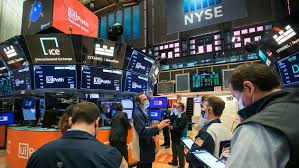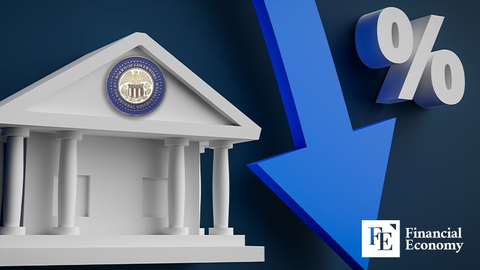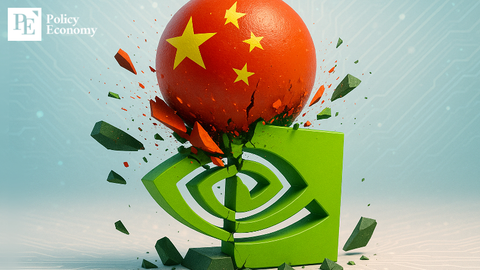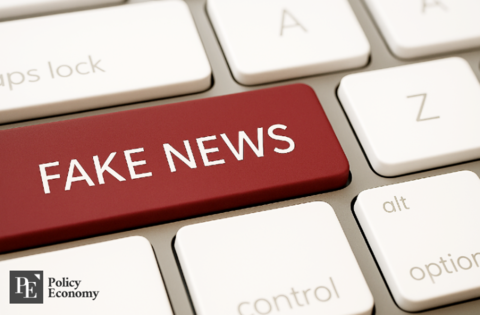Wall Street on High Alert as it Braces for Trump's Tariffs on the US Economy
Input
Modified
Consumer Confidence Decline and the Impact of Tariffs Economic Stimulus and Rate Cuts The Future of Consumer Sentiment

Consumer Confidence Decline and the Impact of Tariffs
Wall Street is on high alert as economic uncertainty persists in financial markets, following the steepest decline in US consumer confidence since the pandemic began in February. This significant change has prompted alarms among economists, who have cautioned that it may indicate the onset of more extensive economic challenges. It is important to note that the protracted uncertainty surrounding tariff policies that began under the Trump administration, as well as the ongoing trade tensions that have impacted businesses, consumers, and policymakers, are factors that many experts attribute to this decline.
The sentiment of households regarding their financial situations and the broader economic environment is reflected in consumer confidence, which is widely considered a critical barometer of economic health. Typically, a decrease in confidence indicates that consumers may reduce their spending, which in turn impacts economic growth, employment, and business revenues. In this instance, the abrupt decline in consumer confidence is a warning that the economic recovery may be more fragile than previously anticipated, particularly in light of the ongoing impact of tariffs and trade-related uncertainties on the financial futures of everyday Americans.
In February, the consumer confidence index experienced the most significant decline in four years, as it gauges the economic perceptions and personal financial prospects of individuals. This decline has caused significant disruptions in a variety of sectors, including the retail, housing, and consumer products industries, where consumer spending is crucial. Although confidence levels are prone to fluctuation over time, this recent decline is significant because it is indicative of an underlying sense of economic unease that has become more pronounced in recent months.
There are numerous factors that may have contributed to this decline; however, the uncertainty surrounding trade policies and tariffs is one of the most obvious. The economic landscape has been unpredictable for businesses and consumers in recent years due to the imposition of tariffs on a variety of products. The financial burden that many Americans already experience as inflation persists has been further exacerbated by these tariffs, which have directly impacted the prices of consumer goods. The average consumer is now faced with higher prices for commonplace products as the cost of imported goods increases. This has resulted in a decrease in spending and an increase in anxiety about the future.
The Trump administration's aggressive tariff policy, particularly in relation to China, was intended to rectify the trade imbalance and induce modifications in the manner in which other nations interact with the US economy. Nevertheless, the outcomes of this approach have been inconsistent. Although tariffs may have been effective in pressing trading partners to negotiate more favorable terms, as well as in accomplishing specific political objectives, the economic repercussions have been substantial, particularly for consumers and small businesses.
Industries that depend on foreign commodities, such as manufacturing, retail, and agriculture, are particularly susceptible to tariffs' direct effects. For instance, the imposition of tariffs on Chinese commodities led to increased costs for a variety of consumer products, electronics, and raw materials. These augmented expenses were subsequently transferred to consumers, a significant number of whom were already contending with inflation in other aspects of their lives. This has resulted in increased prices, which frequently induce a stagnation in consumer spending, thereby impacting the overall economic recovery.
Additionally, the climate of business hesitancy is further exacerbated by the uncertainty surrounding future tariffs. Companies, particularly those that are reliant on global supply chains, are compelled to make challenging decisions regarding whether to endure increased costs, pass them on to consumers, or adjust their operations to avoid additional tariffs. Many businesses have slowed down their employment and investment plans as a result of this unpredictability, which has ultimately contributed to the economic slowdown and weakened consumer confidence.

Economic Stimulus and Rate Cuts
The expectations of monetary policy responses from the Federal Reserve significantly influence the response of Wall Street and the broader financial market to the significant decline in consumer confidence. A recession could be averted by the Federal Reserve taking action in response to a protracted decline in consumer confidence, which serves as a leading indicator of economic performance.
Interest rate reductions are the most frequently discussed policy instrument in this scenario. By reducing interest rates, both consumers and businesses can benefit from increased economic activity by borrowing at a reduced cost. The Federal Reserve is confronted with a precarious equilibrium, as interest rates are currently at relatively low levels. On the one hand, the economy could be stimulated by reduced rates, which could encourage increased spending and investment. Conversely, rate reductions may contribute to inflation if demand exceeds supply.
Many analysts anticipate that the Federal Reserve may resume its cycle of rate cuts by mid-year to address the decline in consumer spending, given the uncertain economic conditions. In theory, reducing rates would facilitate the borrowing of funds by businesses to expand, while also promoting the financing of large-ticket items, such as homes and automobiles, by consumers. The difficulty, however, is the necessity of maintaining a delicate economic equilibrium. An excessive amount of stimulus could lead to unsustainable inflation, which would be counterproductive.
The uncertainty surrounding tariffs continues to be a significant factor in the decline of consumer confidence. Global markets have remained volatile as a result of trade negotiations, particularly those with China. The trade conflict that commenced during Trump's presidency has resulted in retaliatory tariffs, which have disrupted global supply chains and induced a sense of unpredictability. Consequently, consumers and businesses have been deprived of information regarding potential trade policies.
For instance, the potential repercussions of an increase or extension of tariffs on Chinese commodities could be extensive and affect a variety of products that are sold in the United States. Numerous American retailers depend on affordable imports to provide consumers with competitive prices. Any disruption in these supply channels is likely to result in an increase in costs, which would ultimately be borne by consumers. The economy's confidence is further eroded by the difficulty that businesses and consumers face in effectively planning due to the ongoing uncertainty.

The Future of Consumer Sentiment
Businesses and financial institutions are experiencing an increasing level of anxiety as consumer confidence continues to decline. In response to increased costs and economic uncertainty, consumers, who are responsible for the majority of the nation's economic activity, are anticipated to reduce discretionary expenditure. This reduction in expenditure has the potential to exacerbate any potential downturn, thereby contributing to further economic stagnation.
It is also feasible that the Biden administration's trade policies will encounter their own obstacles. Although some analysts contend that Biden's tariff strategy is more multilateral and emphasizes negotiations with allies, it will require time to evaluate the efficacy of these endeavors in undoing the harm caused by previous policies. In the interim, tariff-related risks and uncertainties will persist, affecting both businesses and consumers.
The economic recovery may not be as secure as many had anticipated, as evidenced by the significant decline in consumer confidence in February. The broader issue of trade uncertainty remains a significant obstacle to recovery, despite the possibility that the Federal Reserve may contemplate interest rate cuts to assist in stimulating the economy. The economic environment has become unpredictable and frequently volatile as a result of the ongoing impact of tariffs, particularly those imposed by the Trump administration.
Businesses and consumers alike must prepare for the potential of a protracted period of economic instability as Wall Street closely monitors these developments. The Federal Reserve and other policymakers' actions in the upcoming months will be crucial in determining whether the US economy can rebound or if it will experience a more severe decline as a result of the persistent effects of trade-related uncertainty. The future of the US economy will be influenced by the tariff policies and broader economic strategies as the situation continues to unfold.





















